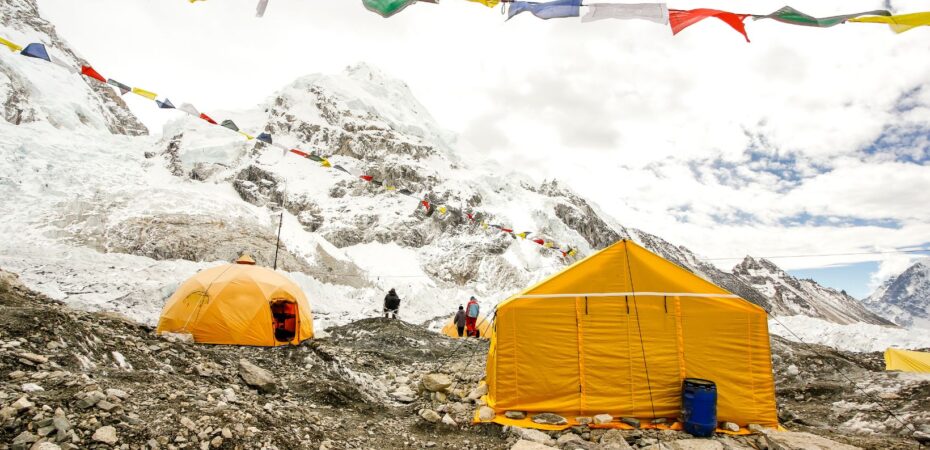Are you dreaming of trekking to the majestic Everest Base Camp but worried about the costs? Well, fear not! In this article, I’ll share my expert tips on how to make your Everest Base Camp trek a reality even on a tight budget. From finding affordable accommodation to saving on transportation, I’ve got you covered. So, lace up your boots and get ready for an adventure of a lifetime without breaking the bank!
When it comes to trekking to Everest Base Camp on a budget, planning is key. In this guide, I’ll walk you through the essential steps to help you save money without compromising on the experience. From selecting the right time to trek to choosing the most cost-effective route, I’ll share my insider knowledge to ensure you have a memorable journey without draining your bank account. So, let’s dive in and discover how you can make your Everest Base Camp trek an affordable and unforgettable adventure.
Planning your Everest Base Camp Trek on a Budget
Choosing the Right Time to Trek
When planning a Trek to Everest Base Camp on a budget, it’s important to consider the timing. The peak tourist season in the region is from March to May and from September to November. During these months, the weather is more favorable, making it easier to trek. However, this also means that accommodation prices can skyrocket and trails can get crowded. For those on a budget, consider trekking during the off-peak seasons like December to February and June to August. The weather might be harsher, but you’ll have a more peaceful experience and be able to find better deals on accommodation.
Determining Your Budget
Before embarking on your Everest Base Camp trek, it’s important to determine your budget. Calculate all the costs involved, including flights, accommodation, permits, meals, and gear. Keep in mind that the cost will vary depending on the duration and route of your trek. A shorter trek, like a 12-day journey from Lukla to Everest Base Camp and back, will cost less compared to a longer trek that includes additional acclimatization days or side trips. A rough estimate for a 12-day trek can range from $1,000 to $2,000, including all expenses.
Finding the Best Deals on Flights and Accommodations
One of the major expenses of an Everest Base Camp trek is the cost of flights. To save money, look for deals and discounts by comparing prices across different airlines and booking well in advance. Additionally, consider flying into Kathmandu, the capital of Nepal, and then taking a domestic flight or bus to Lukla, the starting point of the trek. This can often be more affordable than booking a direct flight to Lukla.

When it comes to accommodations, opt for teahouses along the trekking route. These basic lodges offer affordable rooms and meals, making them a budget-friendly option. Keep in mind that the facilities may be more basic compared to hotels in the cities, but they provide a unique and authentic experience. As for meals, try the local Nepalese cuisine offered at teahouses, which is delicious and budget-friendly.
Packing Tips for a Budget Everest Base Camp Trek
Essential Hiking Gear to Pack
When planning a budget trek to Everest Base Camp, it’s important to pack the essential hiking gear that will keep you comfortable and safe on the trail. Here are some key items to include in your packing list:
- Sturdy hiking boots: Invest in a good pair of hiking boots that provide support and traction on rugged terrain.
- Layered clothing: Opt for lightweight, moisture-wicking base layers, insulating mid-layers, and a waterproof jacket to adapt to changing weather conditions.
- Sleeping bag and camping gear: If you plan on staying in teahouses along the trekking route, you won’t need camping gear. However, a lightweight sleeping bag is still essential.
Tips for Packing Light on a Budget
Packing light is crucial when trekking to Everest Base Camp on a budget. Here are a few tips to help you minimize your load without compromising on the essentials:
- Choose multipurpose items: Pack items that serve multiple purposes, such as a quick-drying towel that can also be used as a blanket or scarf.
- Minimize toiletries: Instead of carrying full-sized toiletries, opt for travel-sized or refillable containers to save space and weight.
- Wear your heaviest items: To lighten your backpack, wear your heavier items, like your heaviest jacket or boots, during the trek.
Renting Gear vs Buying Gear for the Trek
When it comes to gear, you have the option to either rent or buy. Here are some considerations to help you decide:
- Renting gear: Renting gear can be a cost-effective option if you don’t plan on using it frequently after the trek. Look for rental shops in Kathmandu or Lukla that offer quality gear at affordable prices.

- Buying gear: If you plan on doing more trekking in the future or want to have your own gear, buying might be a better option in the long run. However, keep in mind that purchasing gear can be expensive, so look for sales or second-hand options to save money.
Remember, a well-prepared and lightweight pack will not only make your trek more enjoyable but also help you save on extra baggage fees if you’re flying into Lukla. By carefully selecting your gear and packing efficiently, you can have a budget-friendly adventure to Everest Base Camp without compromising on the essentials.


 By
By 



